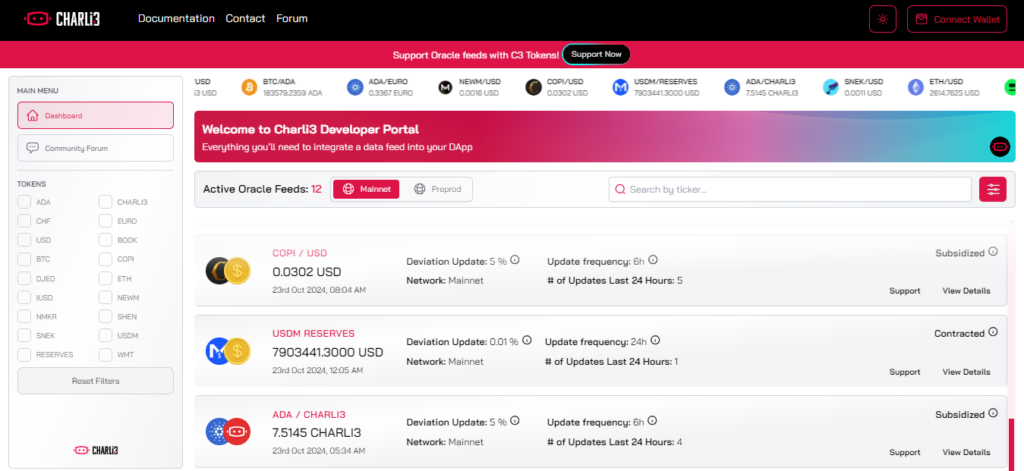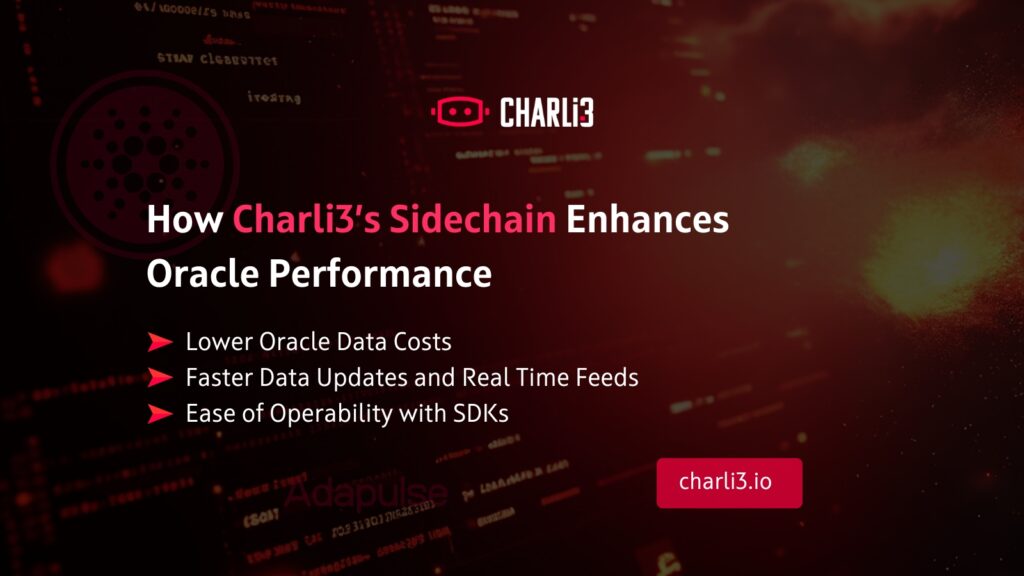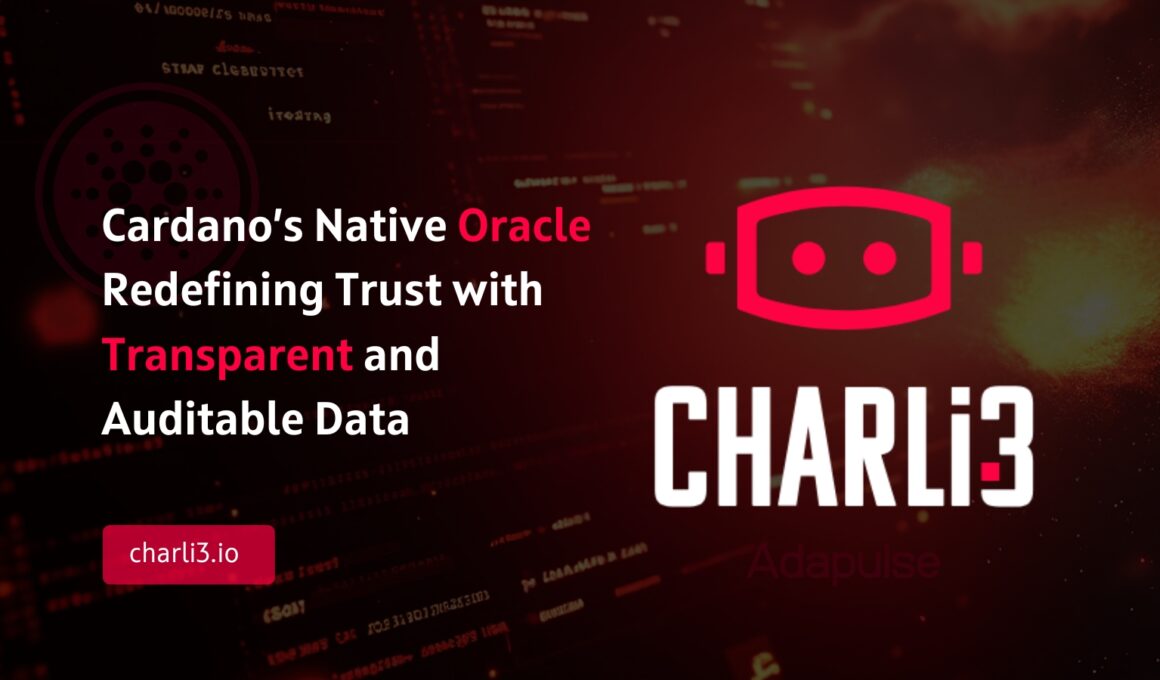When you’re dealing with blockchain tech and decentralized finance, having real time, accurate, and reliable data is one of the most important things to consider. You simply can’t make it work with outdated or poorly timed information. For any blockchain to run smart contracts effectively, it needs a bridge to the real world. That’s what decentralized oracles do, they connect blockchains to off chain data sources, allowing decentralized applications (dApps) to function.
For example, a prediction market where users bet on real world events, or a DeFi protocol where users earn yields. Without a reliable oracle delivering real time data like token prices, NFT floor prices, or DAO voting results, none of that can happen accurately. On Cardano, this need is even more critical. With its focus on scalability and security, Cardano requires robust oracles that align with its principles. But while Cardano is technically capable, there are challenges, particularly when it comes to real-time data retrieval and cost efficiency.
This is exactly where Oraclecharli3 comes into play. However, Charli3 is doing something a bit more radical by blending a traditional Cardano native approach with the power of a new sidechain built on Substrate. If this sounds both innovative and slightly tricky, well, that’s because it is.
Key Takeaways
- Oraclecharli3’s sidechain reduces data costs and speeds up real-time updates for Cardano users
- By building on Substrate, Charli3 bypasses Cardano’s 20 second block limitation, offering sub second data retrieval
- The $C3 token will play a bigger role, acting as gas and transaction fees, enhancing its utility in the Cardano ecosystem.
Evolution of Charli3 and Why Building on Cardano?
Charli3 originally set out to become the native decentralized oracle for Cardano, aiming for full integration into its ecosystem. One of its key innovations was posting node values directly on chain. This on chain aggregation provided unmatched transparency and auditability, everything was out in the open.

However, while this approach seemed ideal at first glance, the practical challenges started showing up. For one, the cost. Every transaction on Cardano requires ADA, and as usage grew, the costs began rising, especially for end users. This makes it impossible to push data to the chain in real time, creating a bottleneck for applications needing sub second accuracy.
Cardano’s 20 second block timing limitation was a deal breaker for certain applications. This timing meant that while Charli3 could provide data on chain, it couldn’t do so fast enough for real time applications. And when every transaction incurs a fee, the costs for users were adding up. Charli3 needed a way to lower those fees while speeding up data access.
What is Oraclecharli3’s Substrate and its Frame Work?

After experimenting with side chain architecture in the past, the Charli3 team found their solution in Substrate, a flexible blockchain framework developed by Parity Technologies (the folks behind Polkadot). Substrate offers a modular, customizable foundation for building blockchains, and it’s designed to be both scalable and interoperable, perfect for a sidechain oracle solution.
The best part is that Substrate allows Charli3 to bypass Cardano’s 20 second block limitation by moving data to a faster off chain infrastructure while still interfacing with the Cardano mainnet. By building this sidechain on Substrate, Charli3 can act as a partner chain to Cardano, retrieving data in sub second times and then feeding it into the Cardano ecosystem, reducing both costs and delays.
What makes Substrate such an appealing choice is its flexibility. Substrate allows developers to customize everything from the consensus mechanism to transaction logic. This flexibility is key for Charli3 because it means they can create a blockchain tailor made for high speed data processing, while still ensuring compatibility with Cardano.
How Charli3’s Sidechain Will Work
The sidechain will handle the heavy lifting of oracle data translation and transmission. Instead of relying entirely on Cardano’s mainnet, Charli3’s sidechain will process data in real time and communicate it back to Cardano through IOHK partner chain. This creates a system where data is retrieved and updated faster and at a lower cost, two major wins for developers and users alike.
Even with all these changes, Charli3’s commitment to transparency and auditability remains unchanged. All node values will continue to be posted directly on chain, ensuring that the data is verifiable by anyone, at any time. This is an important feature in the decentralized space, where trust in data is paramount.

Expanding Charli3’s Ecosystem Reach
By building on Substrate, Charli3 isn’t just limiting itself to Cardano. The sidechain will enable multichain operability, meaning it can serve not only Cardano’s mainnet and sidechains like Midnight, but also other UTXO based blockchains. This could significantly expand Charli3’s ecosystem, bringing more awareness to its niche infrastructure.
The C3 token will remain at the heart of Charli3’s operations, but with a few new twists. In this sidechain setup, C3 tokens will be used more like gas or transaction fees, making it easier for users to pay for data services. This could also increase the total value locked (TVL) in Cardano, as more use cases emerge for C3 tokens.
The Future Prospects of Zk States
On the horizon, the Charli3 team is also looking into technologies like Zk states, which could further enhance the speed and interoperability of its oracle solutions. These zero knowledge proofs, like the ones used by Mina Protocol, could allow for even more efficient data transmission across ecosystems, pushing Charli3’s capabilities even further.
Charli3’s journey from being a native Cardano oracle to developing a sidechain solution on Substrate is a testament to the team’s commitment to solving real world blockchain problems. While the road ahead still has some uncertainties, the benefits of this new approach are lower costs, faster data, and wider ecosystem reach. As the team continues its research and development, the future of decentralized oracles on Cardano looks brighter than ever.










